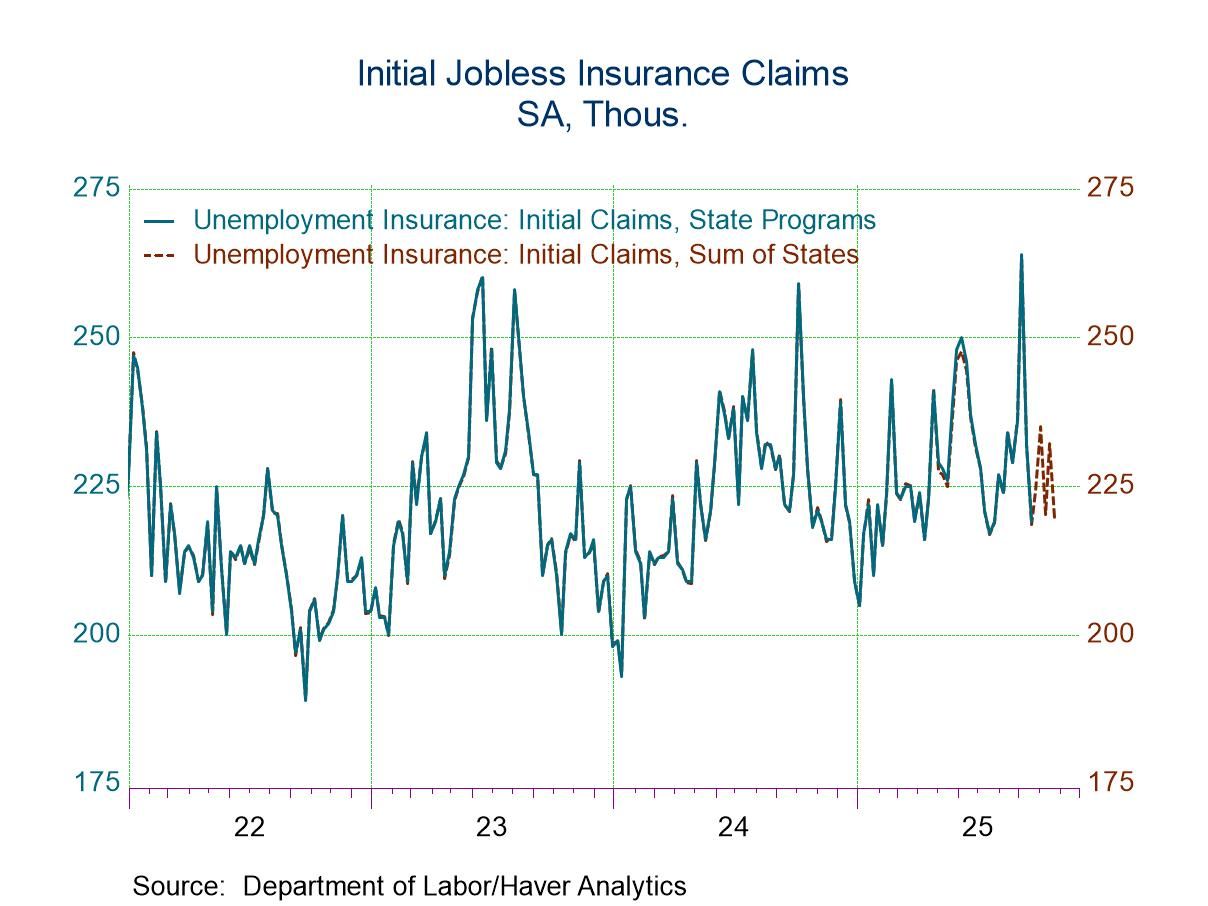U.S. Consumer Credit Strengthens in September
by:Tom Moeller
|in:Economy in Brief
Summary
- Notable gain in credit usage follows prior month’s slowdown.
- Nonrevolving credit usage strengthens and revolving turns positive.
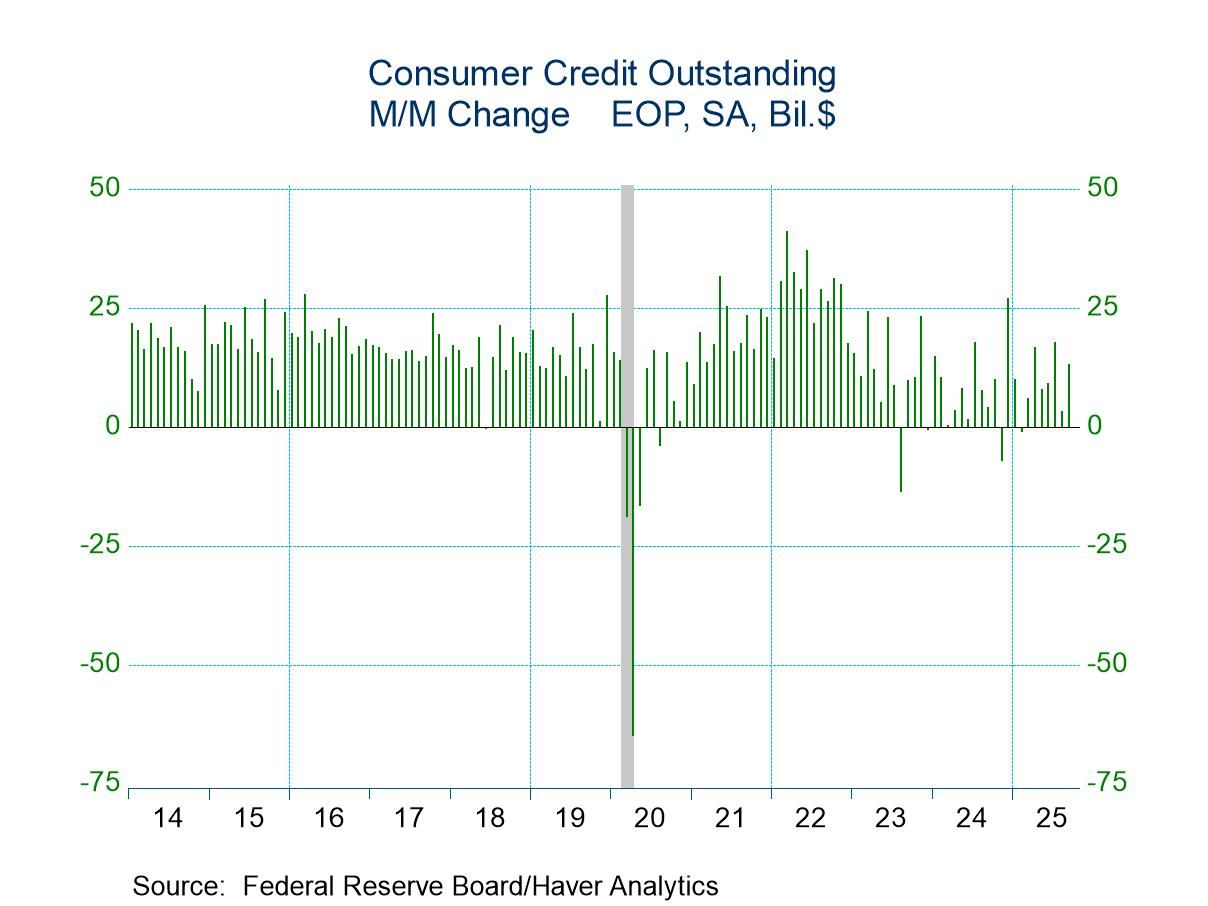
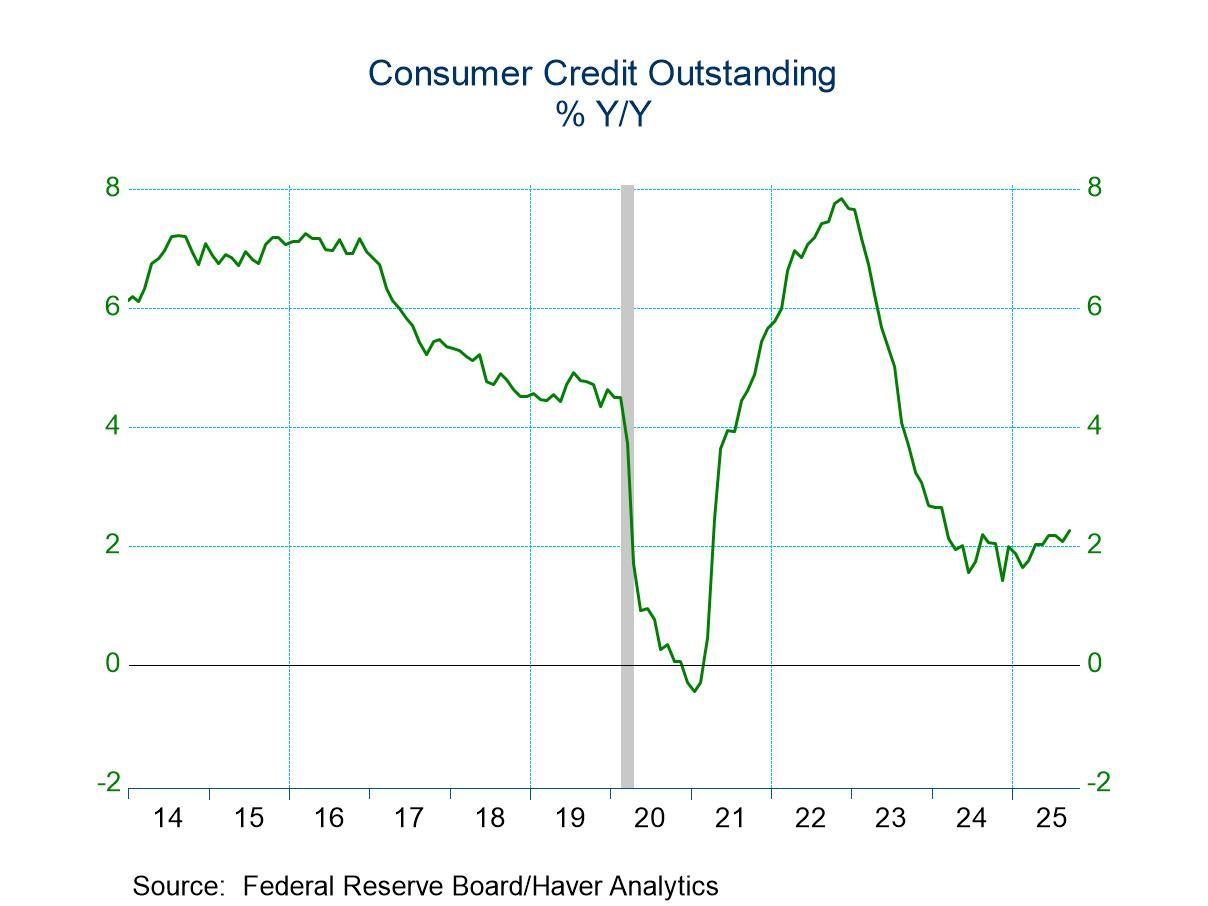
Consumer credit outstanding increased $13.1 billion (2.3% y/y) in September after rising $3.1 billion in August, revised from $0.4 billion, and $17.7 billion in July, revised from $18.1 billion. A $10.0 billion rise had been expected in the Action Economics Forecast Survey.
Nonrevolving credit outstanding rose $11.4 billion (2.1% y/y) in September after increasing $9.2 billion in August, revised from $6.3 billion, and increasing $6.7 billion in July, revised from $6.9 billion. Nonrevolving credit held by depository institutions declined 6.8% y/y in September after falling 7.4% y/y in August. Finance company debt holdings fell 1.5% y/y after declining 1.3%, while credit union holdings rose an increased 12.8% y/y in September, the quickest growth since in two years. Nonrevolving debt of the federal government rose 3.6% y/y in September, the same as in August.
In September, revolving credit outstanding, which includes credit cards, rose $1.7 billion (2.6% y/y) after falling $6.1 billion in August, revised from a $6.0 billion decline, and rising $11.0 billion in July, revised from $11.2 billion. Revolving credit outstanding held by depository institutions fell 3.0% y/y. Revolving credit held by finance companies fell a steady 14.7% y/y in September, while credit union debt rose 4.5% y/y in September, up from 3.7% y/y in August.
The consumer credit figures from the Federal Reserve Board are break-adjusted and calculated by Haver Analytics. The breaks in the series in 2005, 2010 and 2015 are the result of the incorporation of data from the Census and the Survey of Finance Companies, as well as changes in the seasonal adjustment methodology. The consumer credit data are available in Haver’s USECON database. The Action Economics forecast figures are contained in the AS1REPNA database.
AI and the Economy is the title of today’s speech by Federal Reserve Vice Chair Philip N. Jefferson and it can be found here.
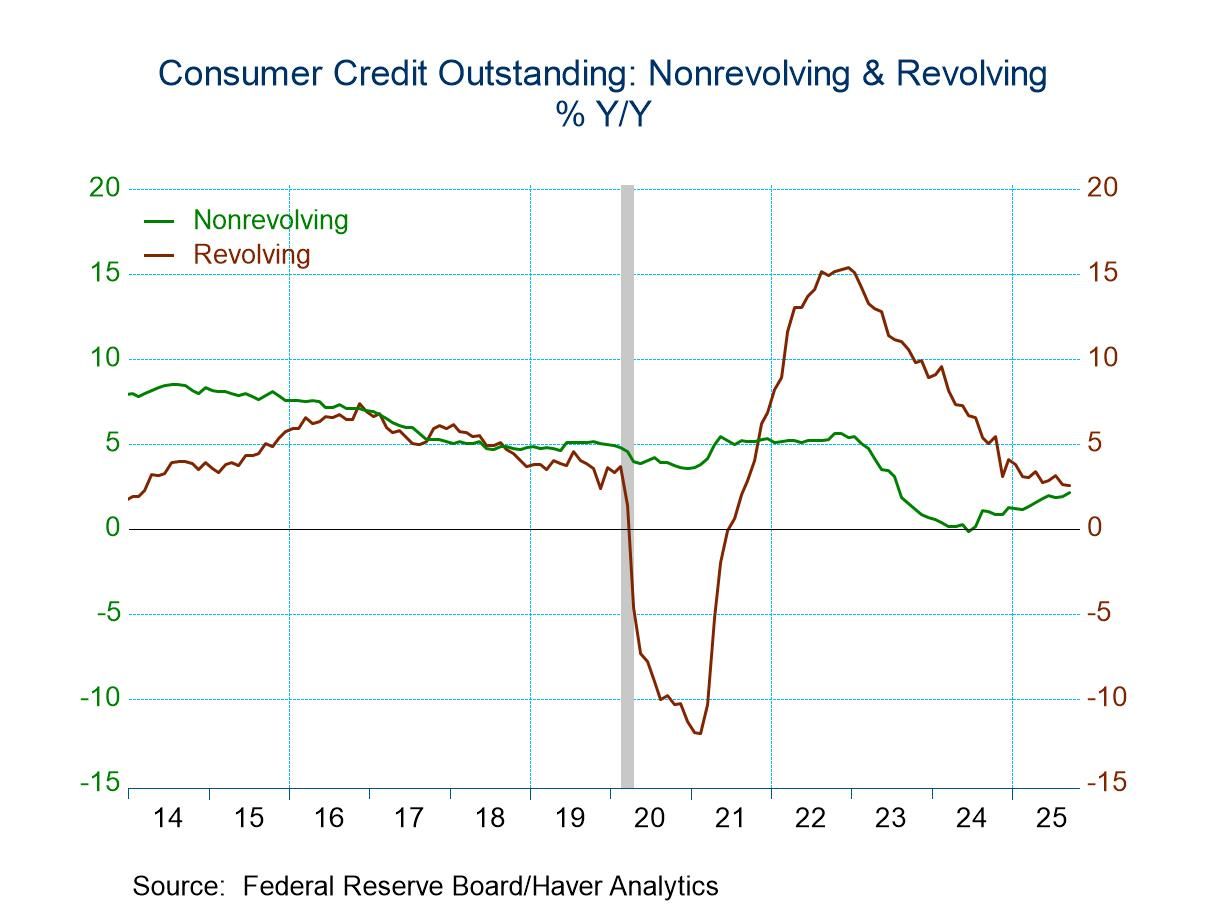
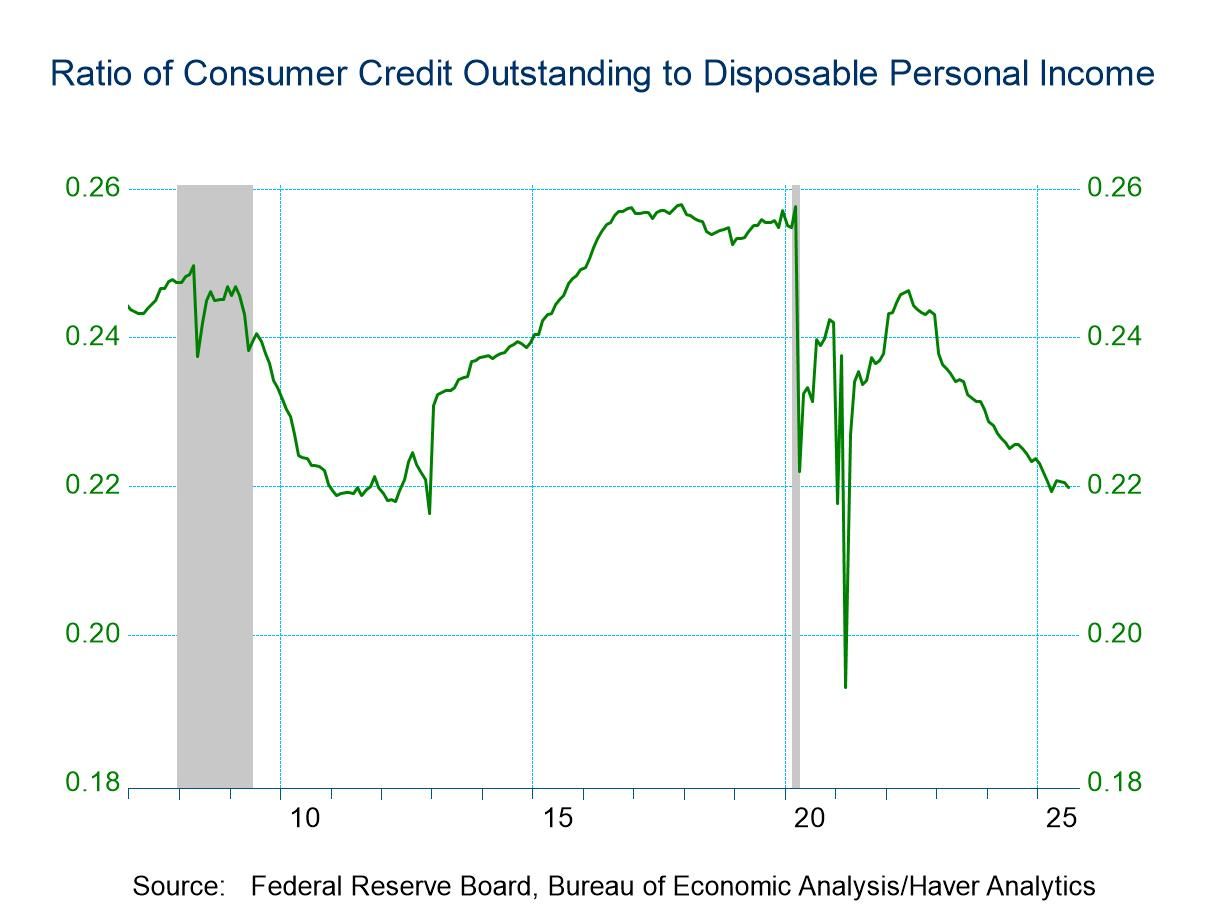
Tom Moeller
AuthorMore in Author Profile »Prior to joining Haver Analytics in 2000, Mr. Moeller worked as the Economist at Chancellor Capital Management from 1985 to 1999. There, he developed comprehensive economic forecasts and interpreted economic data for equity and fixed income portfolio managers. Also at Chancellor, Mr. Moeller worked as an equity analyst and was responsible for researching and rating companies in the economically sensitive automobile and housing industries for investment in Chancellor’s equity portfolio. Prior to joining Chancellor, Mr. Moeller was an Economist at Citibank from 1979 to 1984. He also analyzed pricing behavior in the metals industry for the Council on Wage and Price Stability in Washington, D.C. In 1999, Mr. Moeller received the award for most accurate forecast from the Forecasters' Club of New York. From 1990 to 1992 he was President of the New York Association for Business Economists. Mr. Moeller earned an M.B.A. in Finance from Fordham University, where he graduated in 1987. He holds a Bachelor of Arts in Economics from George Washington University.


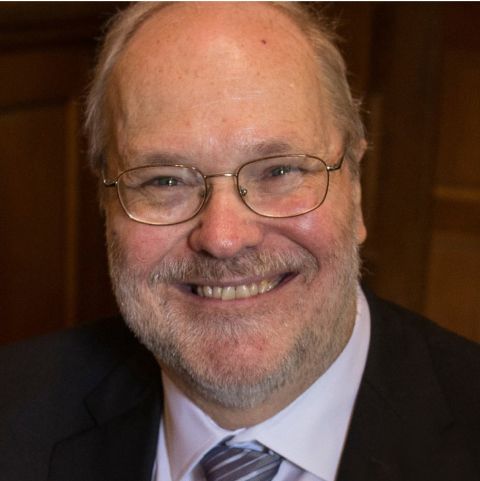
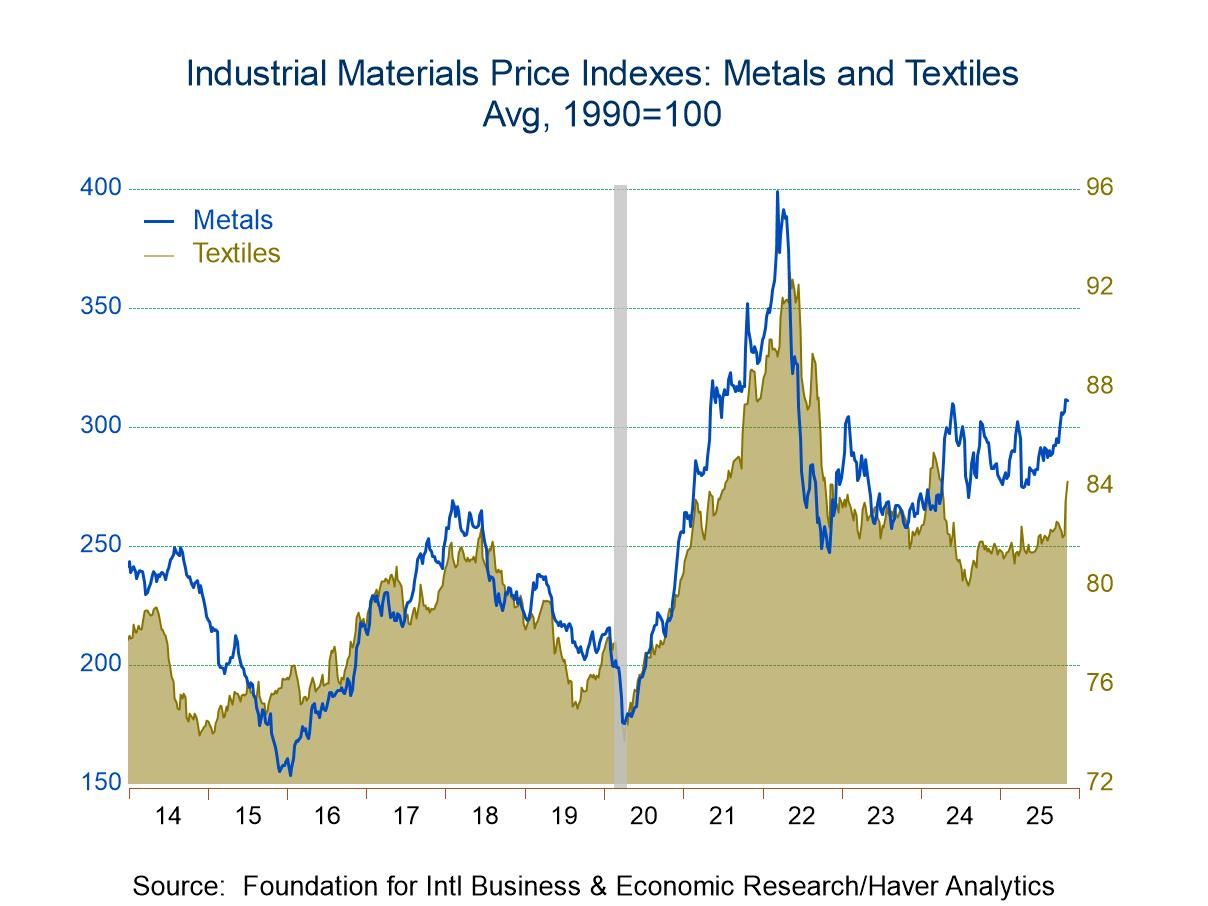
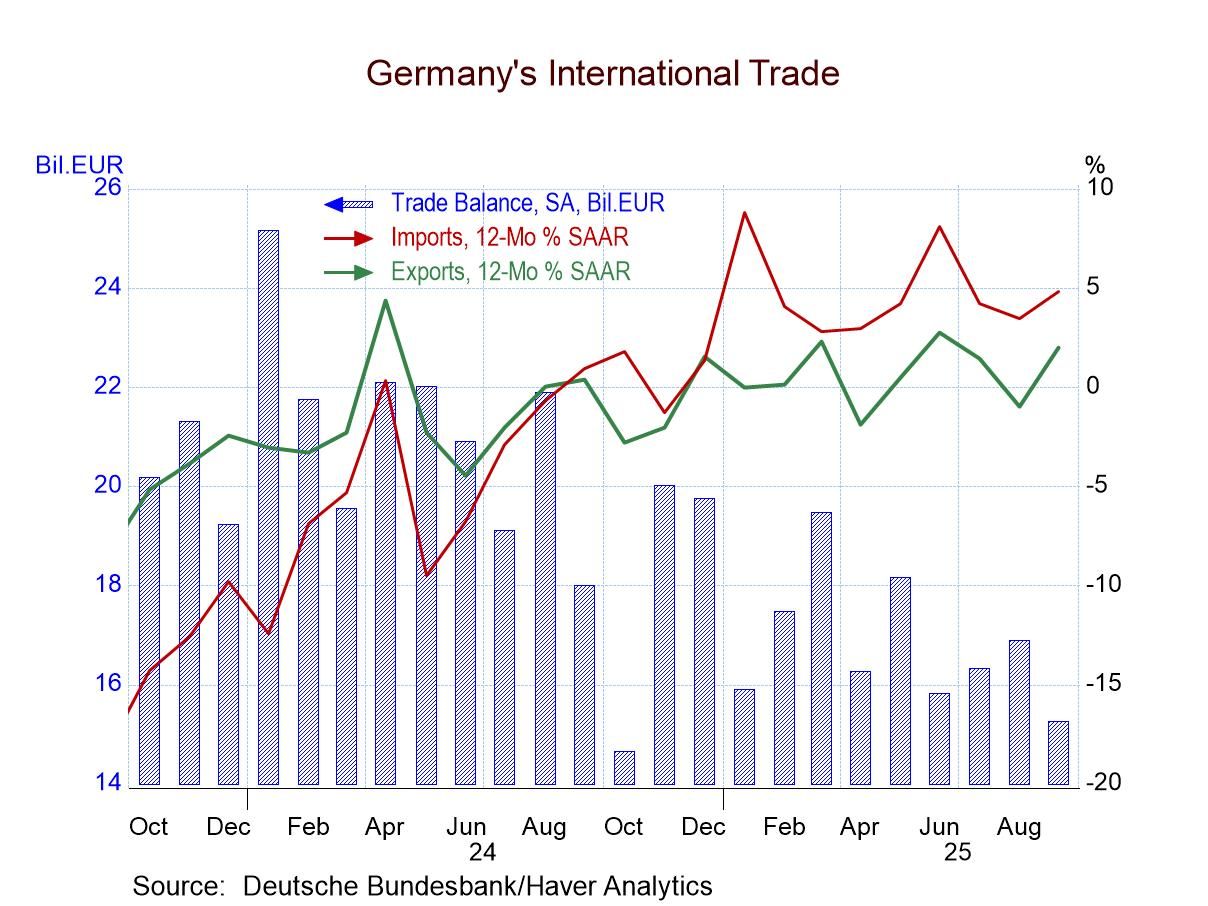
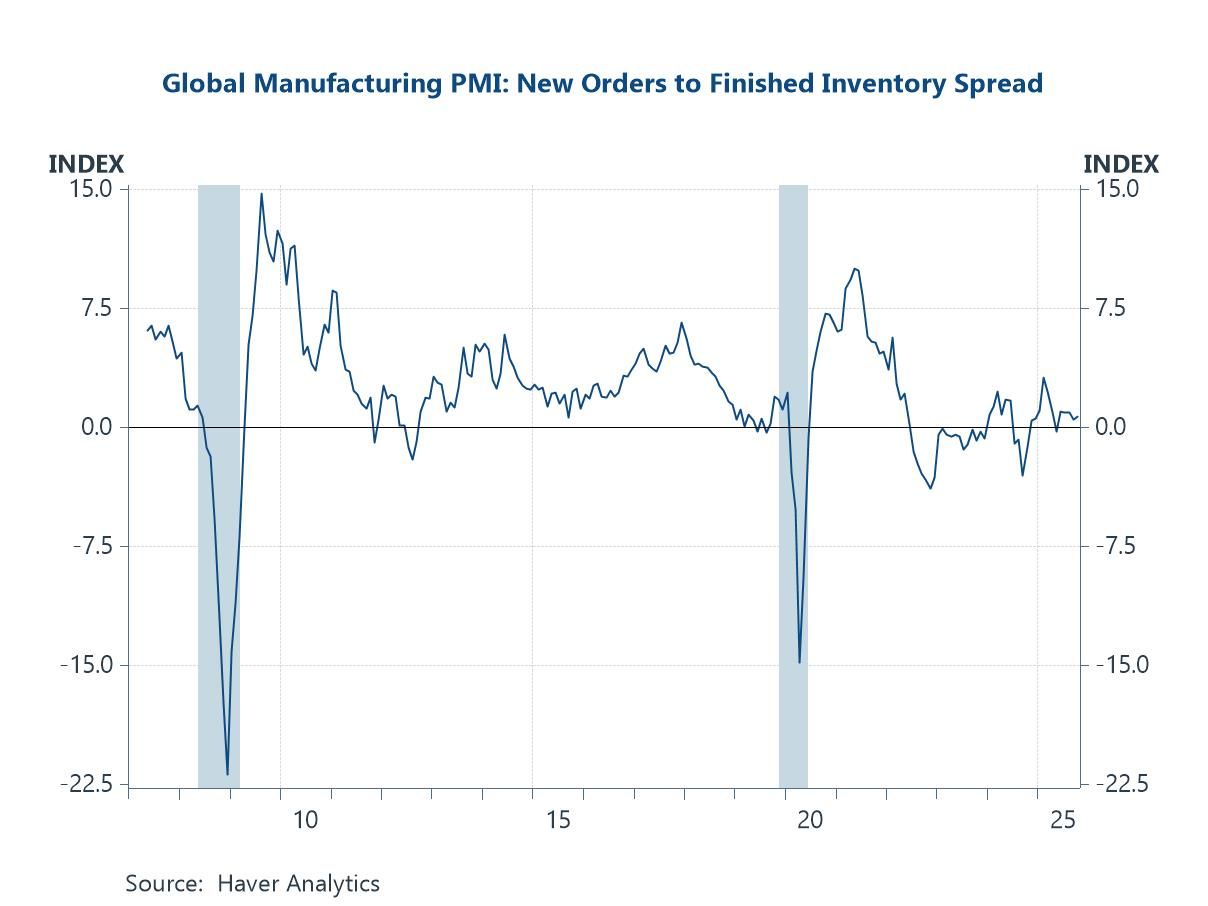
 Global
Global